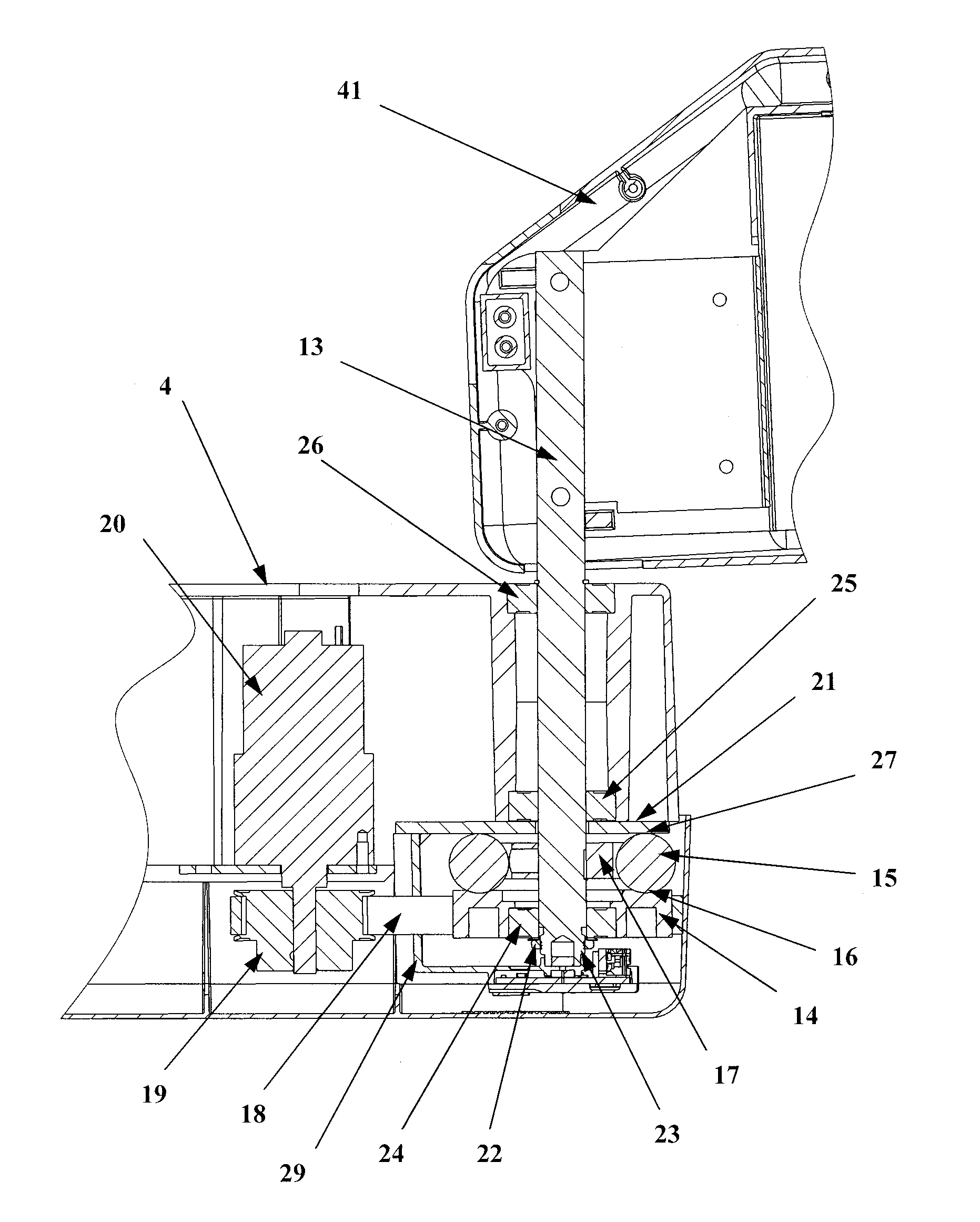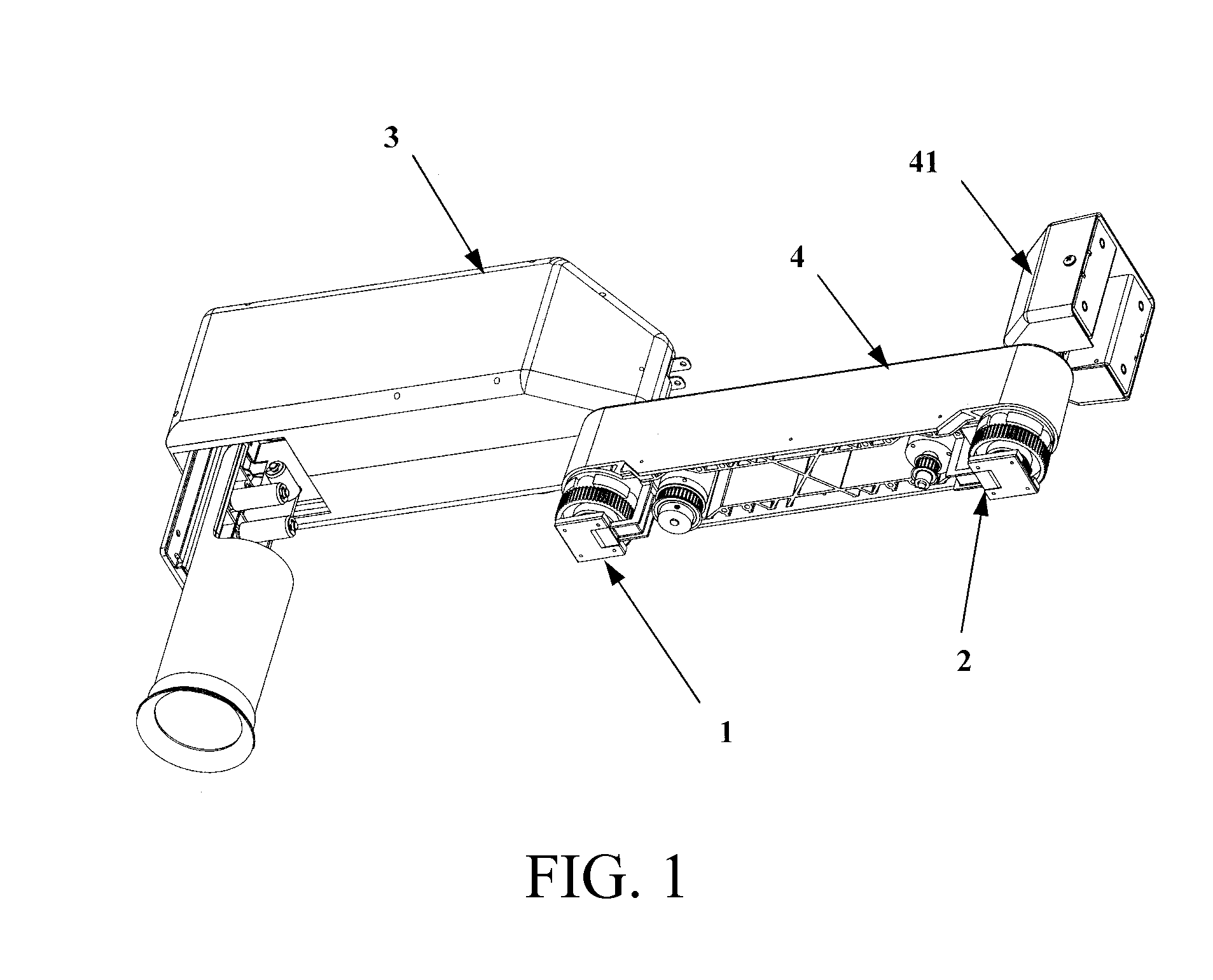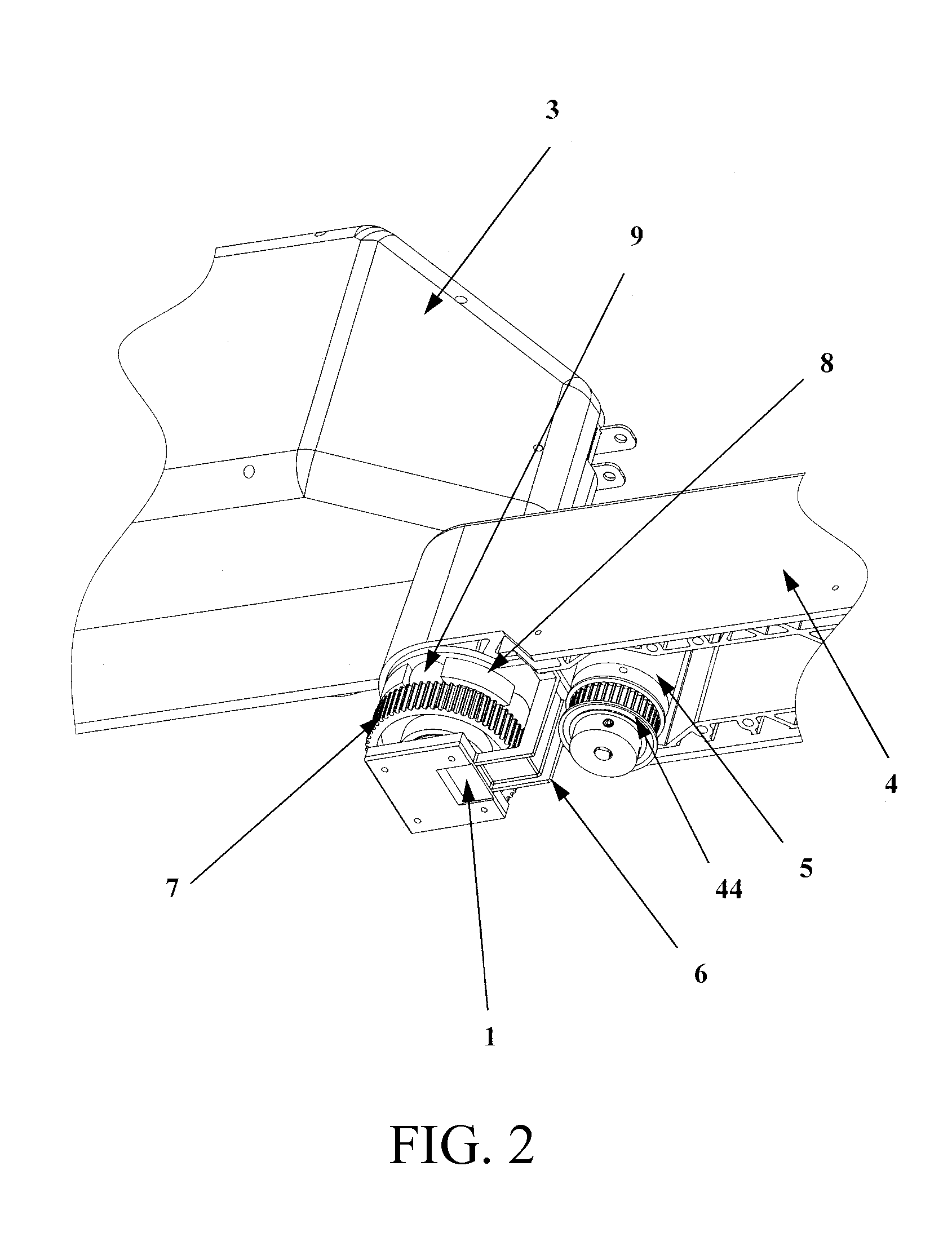Traction drive system
a technology of traction drive and drive shaft, which is applied in the direction of couplings, slip couplings, gearing, etc., can solve the problems of damage to drivetrain components or motors providing power to the arm, robot arms for vending machine applications, and inability to provide a mechanism to allow the arm to move, etc., to achieve high precision movement, reduce backlash, and reduce the effect of the ratio of ratios
- Summary
- Abstract
- Description
- Claims
- Application Information
AI Technical Summary
Benefits of technology
Problems solved by technology
Method used
Image
Examples
Embodiment Construction
[0023]Referring to FIG. 1, the utilization of two traction drive systems 1 and 2 are shown in an articulated robotic arm. The first traction drive system 1 is assembled in an arm segment 4 and directly rotates arm segment 3 relative to arm segment 4. The second traction drive system 2 is assembled to arm segment 4 and rotates arm segment 4 relative to arm segment 41, which can be a fixed base feature of the articulated robotic arm. It will be appreciated that any suitable number of traction drive systems may be applied to an articulated robotic arm to move any suitable number of arm segments in any suitable directions.
[0024]Referring to FIG. 2, the traction drive system 1 is shown at the joint of two articulated robotic arm segments. The traction drive system 1 is assembled to arm segment 4 and provides rotational motion to arm segment 3 relative to arm segment 4. As shown, the traction drive system 1 can include an input drive disk 7, a spider 8, and traction balls 9. A mounting br...
PUM
 Login to View More
Login to View More Abstract
Description
Claims
Application Information
 Login to View More
Login to View More - R&D
- Intellectual Property
- Life Sciences
- Materials
- Tech Scout
- Unparalleled Data Quality
- Higher Quality Content
- 60% Fewer Hallucinations
Browse by: Latest US Patents, China's latest patents, Technical Efficacy Thesaurus, Application Domain, Technology Topic, Popular Technical Reports.
© 2025 PatSnap. All rights reserved.Legal|Privacy policy|Modern Slavery Act Transparency Statement|Sitemap|About US| Contact US: help@patsnap.com



